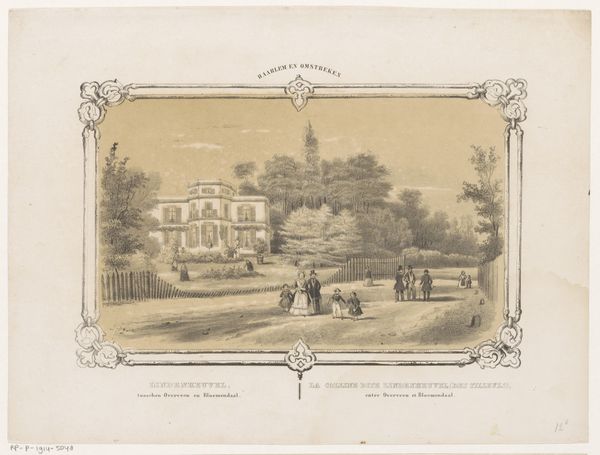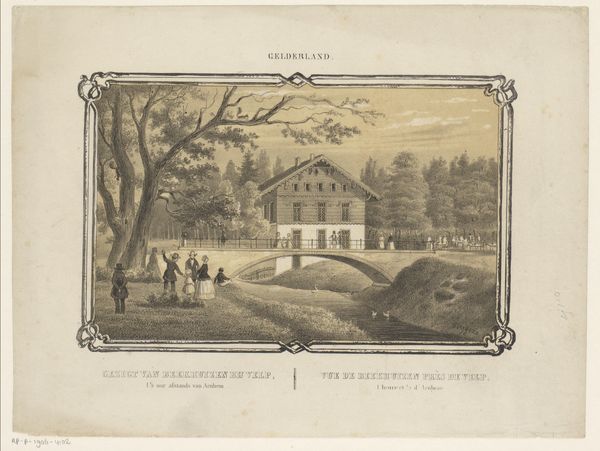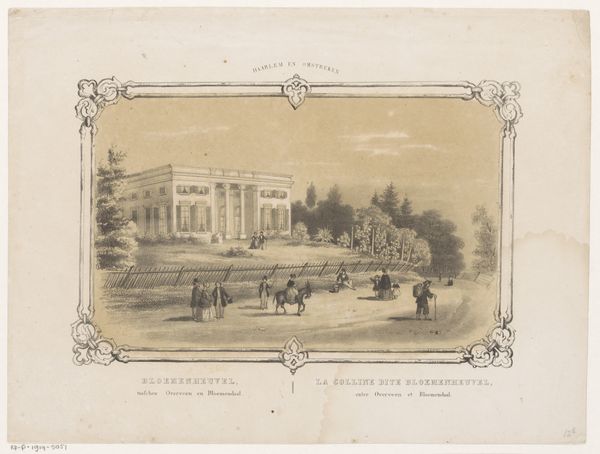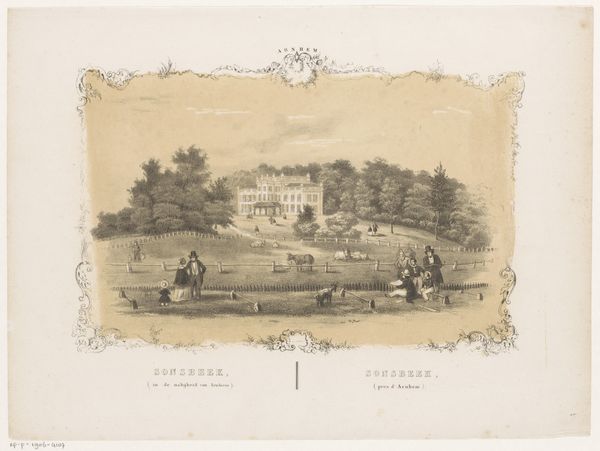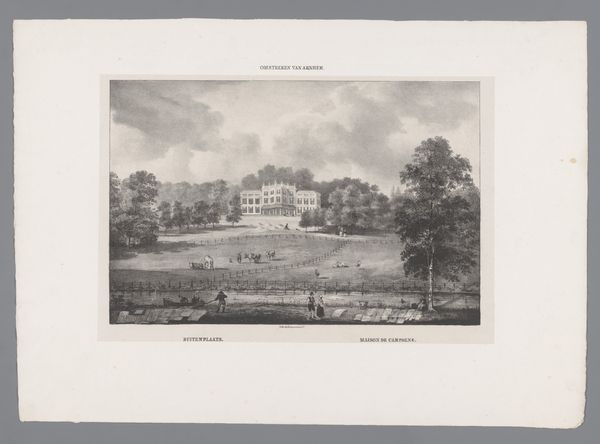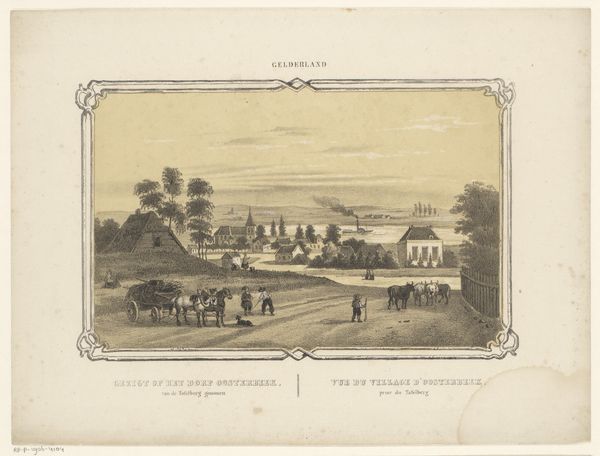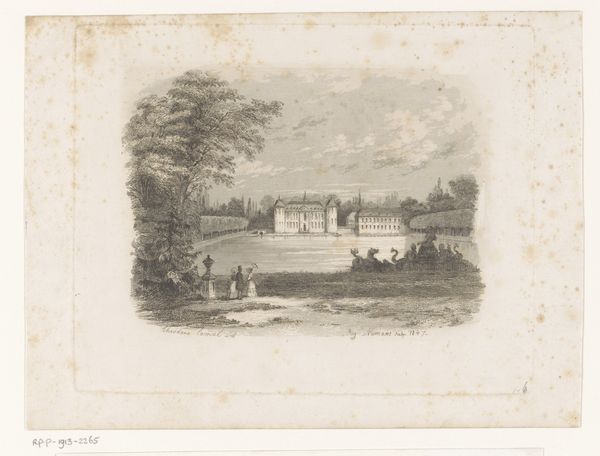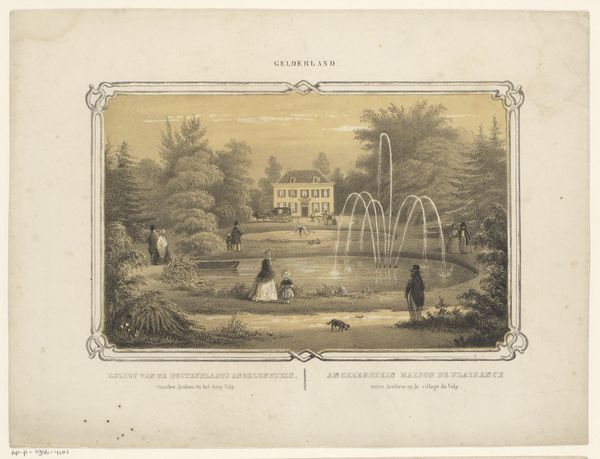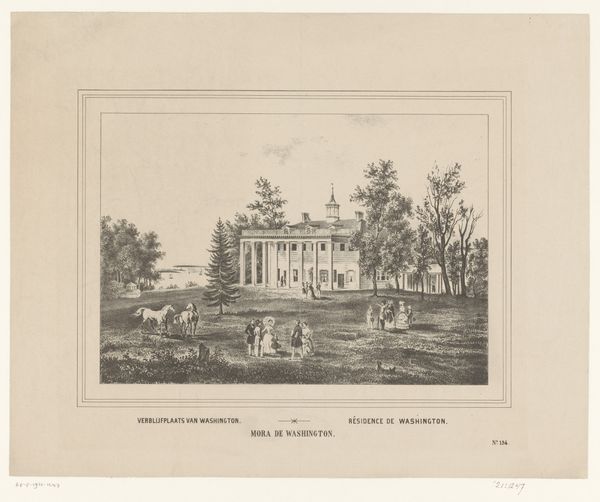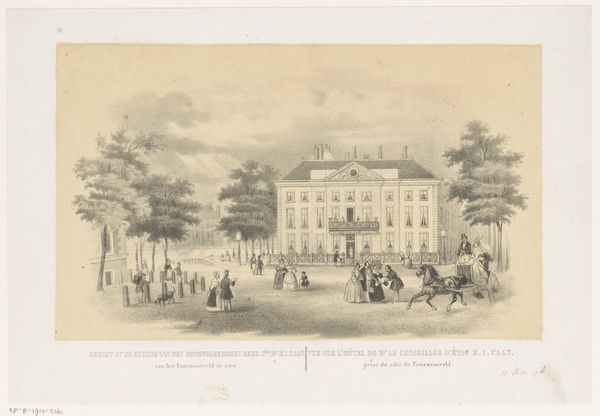
Gezicht op de buitenplaats De Oorsprong in Oosterbeek 1812 - 1887
0:00
0:00
print, engraving
#
garden
# print
#
old engraving style
#
landscape
#
personal sketchbook
#
historical photography
#
romanticism
#
19th century
#
cityscape
#
genre-painting
#
engraving
Dimensions: height 270 mm, width 360 mm
Copyright: Rijks Museum: Open Domain
Editor: So, this is "Gezicht op de buitenplaats De Oorsprong in Oosterbeek" by Frederik Lodewijk Huygens, made sometime between 1812 and 1887. It's an engraving. It’s such a peaceful scene, almost dreamlike. All the figures seem content in their own little worlds. How do you interpret this work? Curator: It evokes a yearning for simpler times, doesn't it? Consider the estate itself: meticulously positioned at the high point to command the landscape, its architecture echoing power. Now, notice the water; what does the mirrored reflection of the estate suggest to you? Editor: That the present grandeur also looks back to the past? Curator: Precisely. Water, throughout art history, often symbolizes memory and reflection – both literal and metaphorical. And consider the leisurely activities. Fishing, promenading – they're all visual shorthands for cultivated leisure, but also for the idealization of nature, an escape from the burgeoning industrial world. Editor: So it’s not just a pretty picture, but a carefully constructed symbol? Curator: Indeed. These images reinforce social hierarchies and aspirations. The 'Oorsprong' becomes a locus of cultural memory, its symbolism far outweighing its simple depiction. Can you imagine how this image could impact a viewer in the 19th century versus now? Editor: Wow, I never would have considered all those layers of meaning just looking at it casually. I’ll definitely think twice about landscape prints from now on! Curator: Absolutely, that interweaving of image, symbol and meaning truly enriches our experience and informs cultural legacy.
Comments
No comments
Be the first to comment and join the conversation on the ultimate creative platform.
